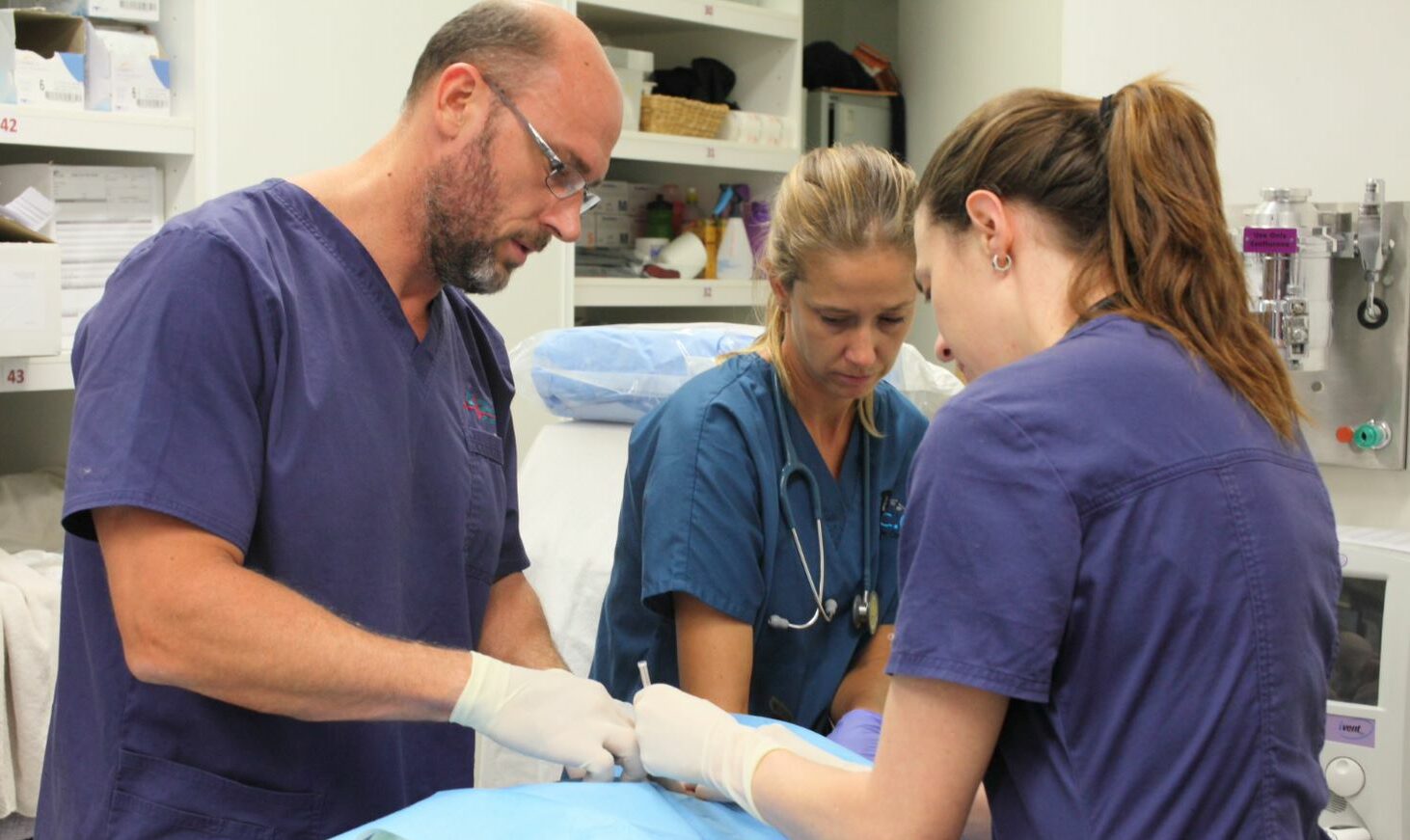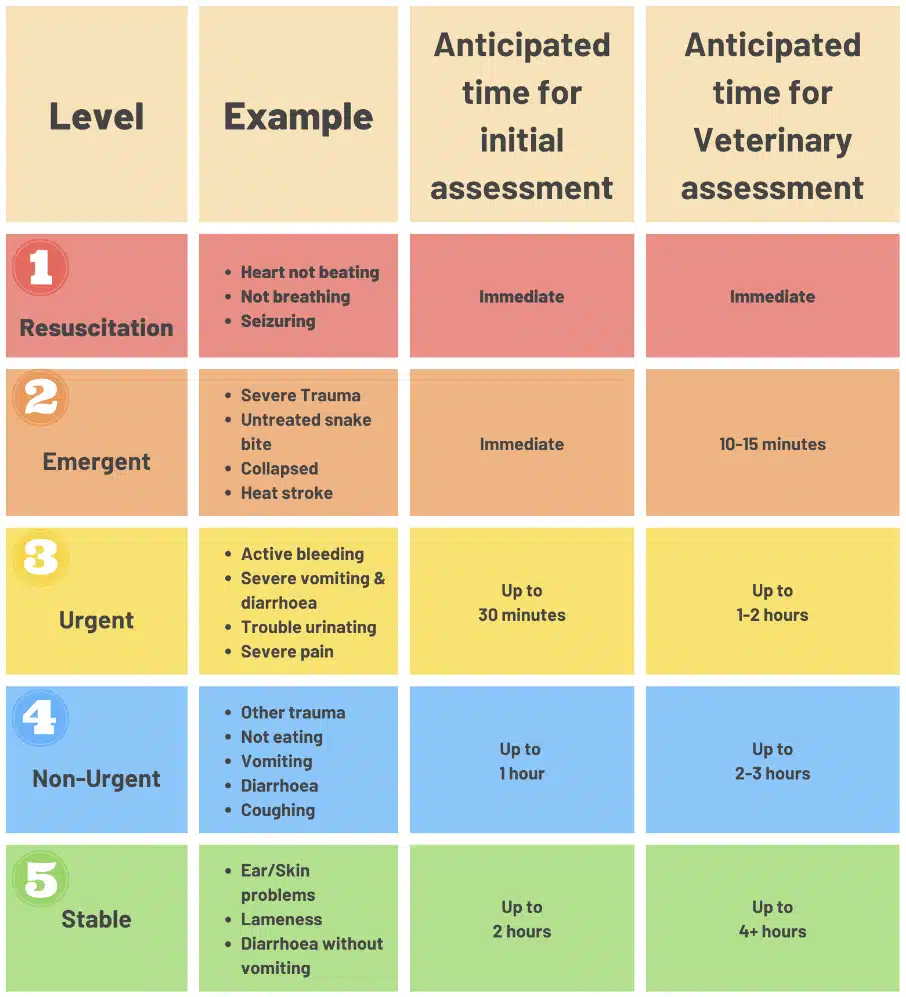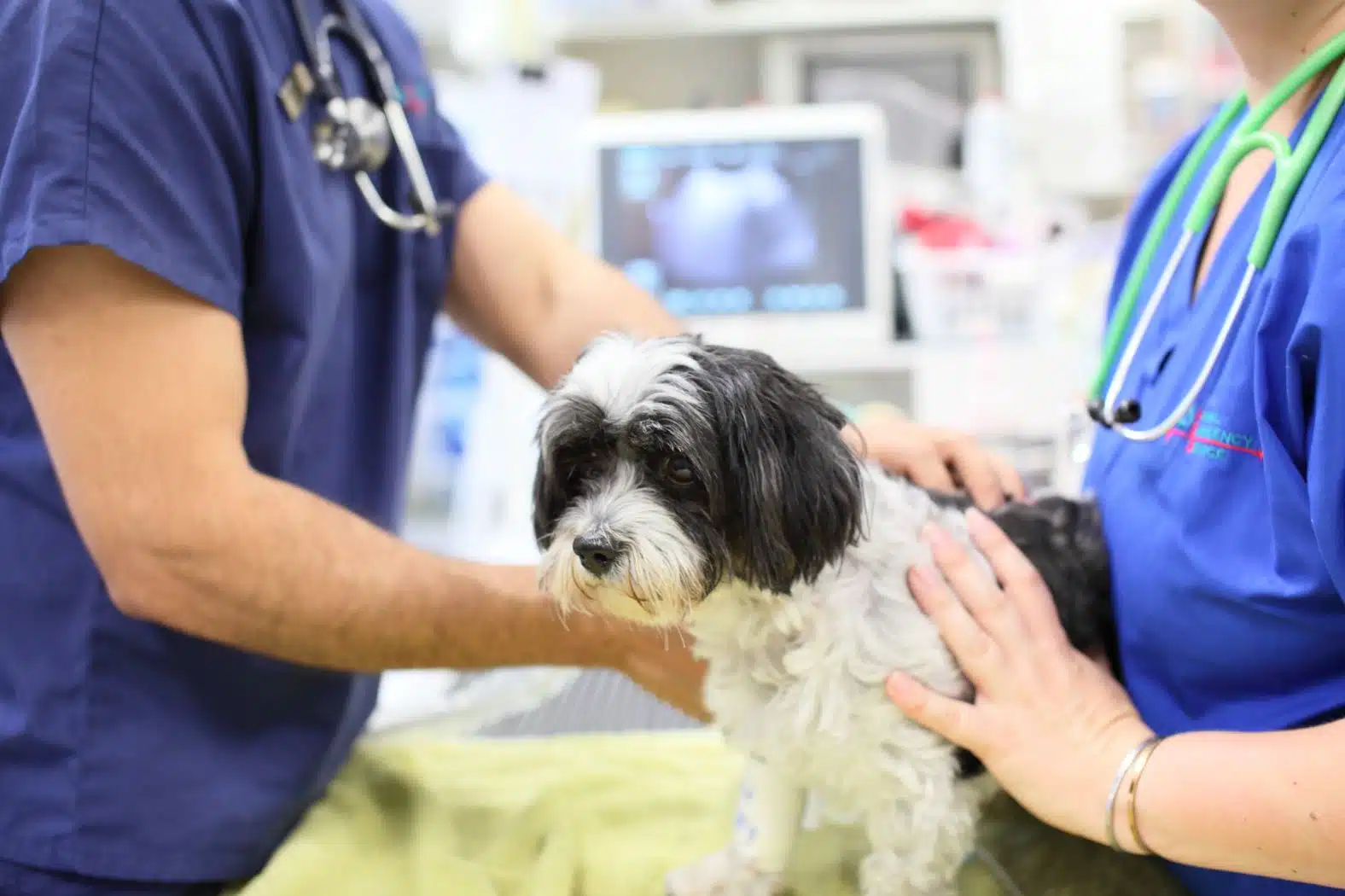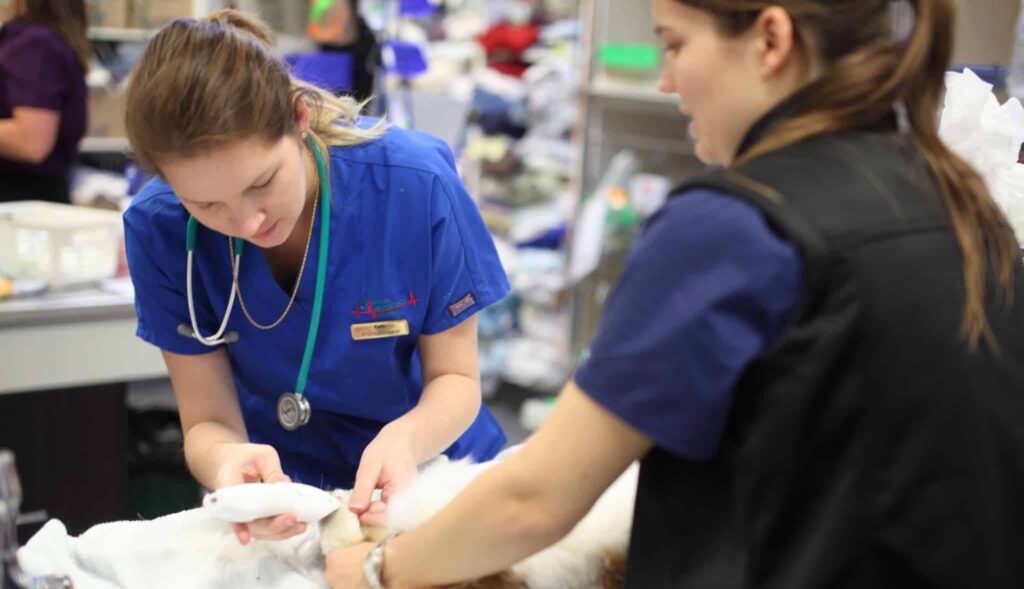If you’ve been a part of the veterinary industry over the last decade, chances are you’ll have certainly noticed clinics becoming busier, especially in the last few years. Fully-booked schedules, back-to-back consults, and an increased number of walk-ins and emergencies are something most veterinarians are now seeing regularly. With an increasing number of patients demanding veterinary care, it’s becoming harder to find adequate time to allocate to every single patient and provide gold standard medicine to every case.
In our previous article on Waiting Times in Veterinary Emergency (And How to Overcome Them), we highlighted and discussed the challenges behind increased pet ownership and its wider impacts on the veterinary profession. With the need for veterinary attention recently surging due to an influx of new patients, and these patients now meaning more to their owners than ever before, this shift has placed added strain on an already stretched veterinary workforce. This industry change has made delivering gold standard medicine increasingly difficult to achieve.
Standards of Patient Care in Veterinary Medicine
Being busy is not necessarily always negative – helping more patients and being able to utilise time effectively can be satisfying if balanced appropriately with your own personal wellbeing. What’s not satisfying though is when an overly busy schedule or excess number of patients begins to impact the standard of care that your clinic is able to offer.
If you’re no longer able to offer the “Gold Standard” of patient care, this can be a significant concern. Lowering standards of patient care can impact patient outcomes, but it can also impact our job satisfaction and mental wellbeing, contributing to workplace stress. One study published in the British Veterinary Association VetRecord highlighted that 52% of veterinarians encountered ethical dilemmas regarding the interests of their clients and patients on a weekly basis.[1]
So as veterinary professionals, we all strive to offer the highest standards of veterinary care for every single one of our patients. Can we achieve this in the current veterinary climate? Is it possible to continue to provide “Gold Standard Medicine” for every patient that comes through the door? And what changes can help us work towards this? Read ahead and find out.

What is “Gold Standard Medicine” Anyway?
The term “Gold Standard Medicine” is thrown around a lot in the field of veterinary medicine – no doubt you’ve heard it used to describe protocols, procedures, or sometimes even plastered around entire clinics. But what exactly does it mean? Is there an expectation that everything we do has to be at a gold standard, even if we’re still able to achieve positive patient outcomes? And does the client’s perception of gold standard medicine not always match up completely with the veterinary perception of the term?
Despite its association with veterinary medicine, the term “gold standard” originated in the finance industry, eventually becoming adopted by fields of medicine to demonstrate an idealised approach to patient care. This has since morphed into the expectation that the use of cutting-edge techniques, advanced technology, and intensive intervention are necessary for every animal in order to achieve an optimal outcome.[2]
This idealist view of patient care sets a standard that does not reflect the realities of veterinary practice, where we must often treat with multiple constraints (e.g., owner circumstances, staff resourcing, financials) in mind.
The Challenges of Gold Standard Medicine
Let’s be honest, providing the most detailed, advanced, and intensive medical care for every single patient just simply isn’t achievable in our current veterinary climate. In fact, many of the challenges behind achieving a veterinary gold standard can be attributed to an imbalance between numbers of available veterinarians and rapidly increasing demand for veterinary services due to higher levels of pet ownership. A variety of factors, including client and clinical constraints, means that the perfect diagnostic plan and ideal treatment won’t be available in all cases.
“I think we can do Gold Standard in the appropriate speed if we prioritise the right patients. Gold standard medicine can’t mean: see everything and treat it completely in 20 minutes.” – Dr Rob Webster, Co-CEO at Animal Emergency Australia
From a veterinary perspective, Dr Rob Webster, co-CEO of AEA and specialist in Emergency and Critical Care describes that providing gold standard medicine towards every patient “doesn’t necessarily mean delivering 100% on-the-spot care for every single patient that walks through the door”.
While some clients may expect this as part of a gold standard, this simply isn’t achievable. Instead, our definition of a veterinary gold standard should be able to reflect the reality of veterinary practice and our desire for better outcomes for animals, their owners, and veterinary professionals.
Changing the Veterinary Mindset
This means we need to re-align our own views of gold standard medicine. It shouldn’t mean every possible test is performed on every single patient as soon as possible, but rather our ability to provide the following:
- Appropriate management options for each individual case
- Detailed diagnostic plans and focus on evidence-based veterinary medicine (EBVM)
- Giving priority to patients with the most urgent conditions
- High standard of communication among teams and clients
- Professional and ethical approach to all cases
- Attentive level of patient care and monitoring
So rather than every patient receiving the most advanced diagnostics and treatments, veterinarians should instead view gold standard medicine as a spectrum of care.
The Journal of the American Veterinary Medical Association defines this as a “continuum of acceptable care that considers available evidence-based medicine while remaining responsive to client expectations and financial limitations”[3]. This allows every patient to be delivered an ideal standard of care based on the individual circumstances of each case.
How Client Education Can Help Us Achieve Gold Standard Medicine
Adjusting our own expectations and adapting our mindset is certainly a healthy start in being able to deliver a gold standard – though doing this alone will only achieve so much. Many potential changes in the veterinary profession can help us work towards gold standard medicine, even in the current workplace climate. This includes one of the most critical aspects that impacts our day-to-day work: Client Education.
Delivering a high standard of veterinary medicine must always start with client education. After all, the client is arguably one of the most important factors in working up and treating every single case. While the wellbeing of the patient is more often than not our priority, this can only occur when partnered with a well-educated client. It’s also true that we are constantly educating our clients throughout the treatment process: consultations, involvement during the treatment process, and during patient discharge and aftercare. But education on veterinary emergencies starts as soon as the client walks into the clinic.
How We Can Educate Clients
Every client must be made aware that triage is a 100% necessary part of veterinary practice and helps us determine the cases that are most urgent and which pets require treatment the most. This can be achieved through a handout that all clients are presented with upon arrival, easily visible infographics on triage placed in the waiting room, or communication with clients upon presentation to the clinic.
All pets will be seen and given the necessary treatment for their respective conditions, but like a human emergency department, those with the most threatening conditions MUST be treated first. As a result, this can extend waiting times for patients with mild or lower-priority health concerns. Setting this expectation immediately with a client can avoid frustration further along the treatment process.
Additionally, it may be helpful to educate clients on the challenges that the veterinary industry is currently facing. We all know that pet ownership in Australia has BOOMED, and that’s been reflected in how many pets are presenting to clinics.
As demonstrated in the 2021 Pets and the Pandemic report[4], there are now an additional 2,000,000 pets in Australia requiring regular veterinary attention, and the growth of the veterinary industry has not grown at the same rate. Clients may gain more of an appreciation for the veterinary services available if informed about the recent changes in the profession.

The Importance of Preventative Health
Lastly, all veterinary professionals must emphasise the importance of preventative and routine care for pets (e.g., regular check-ups, yearly blood tests, flea/tick prevention). Helping to educate owners in adhering to a high standard of preventative care can drastically lower the likelihood of preventable illness, reduce the demand for emergency visits, and in turn help to alleviate some of the workload being placed on veterinarians.
What we’ve covered is simply a start in discussing some of the strategies to help us continue to deliver a high standard of patient care. You can find out more in our article on How to Overcome Long Waiting Times in Veterinary Emergency and discover some of our useful strategies in managing an increasing workload and being able to set professional boundaries.
References:
[1] Kipperman, B., Morris, P., & Rollin, B. (2018). Ethical dilemmas encountered by small animal veterinarians: characterisation, responses, consequences and beliefs regarding euthanasia. Veterinary Record, 182(19), 548–548.
[2] Skipper, A., Gray, C., Serlin, R., O’Neill, D., Elwood, C., & Davidson, J. (2021). “Gold standard care” is an unhelpful term. Veterinary Record, 189(8), 331–331.
[3] Fingland, R. B., Stone, L. R., Read, E. K., & Moore, R. M. (2021). Preparing veterinary students for excellence in general practice: building confidence and competence by focusing on spectrum of care. Journal of the American Veterinary Medical Association, 259(5), 463–470.
[4] Animal Medicines Australia, Pets and the Pandemic, 2021.





